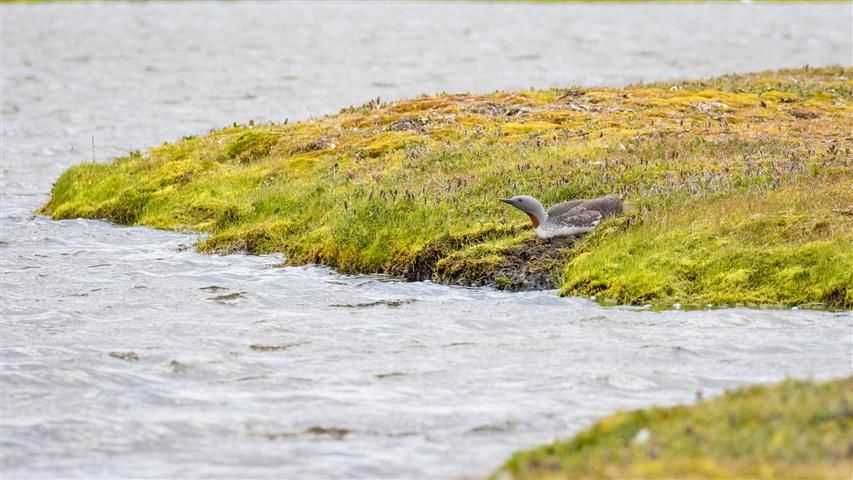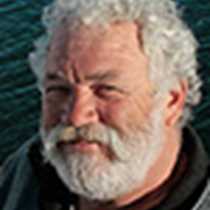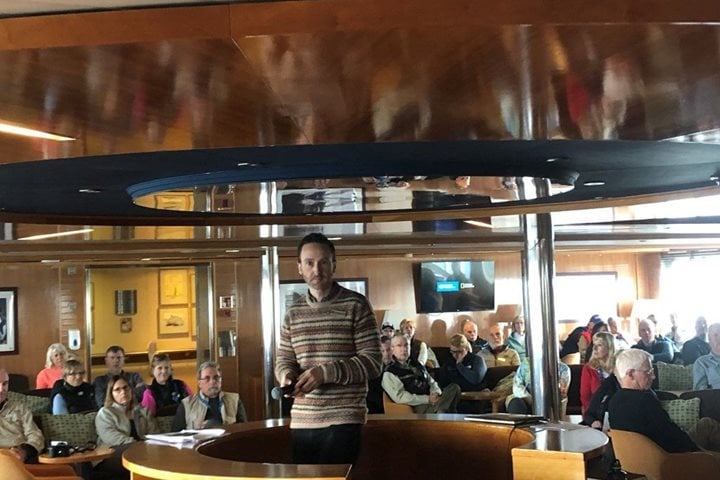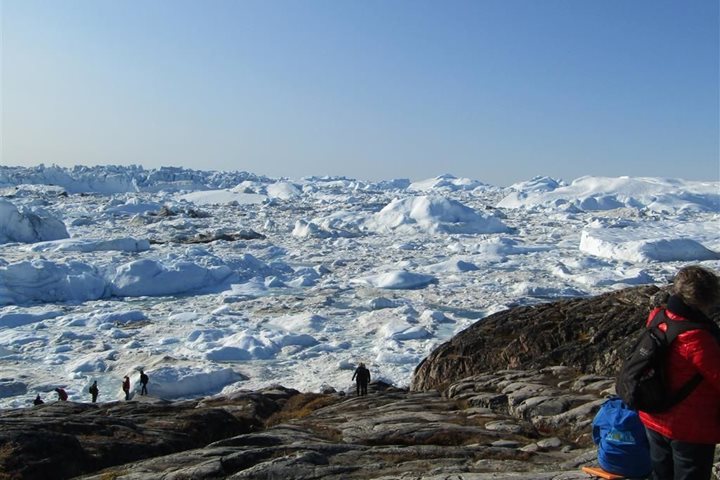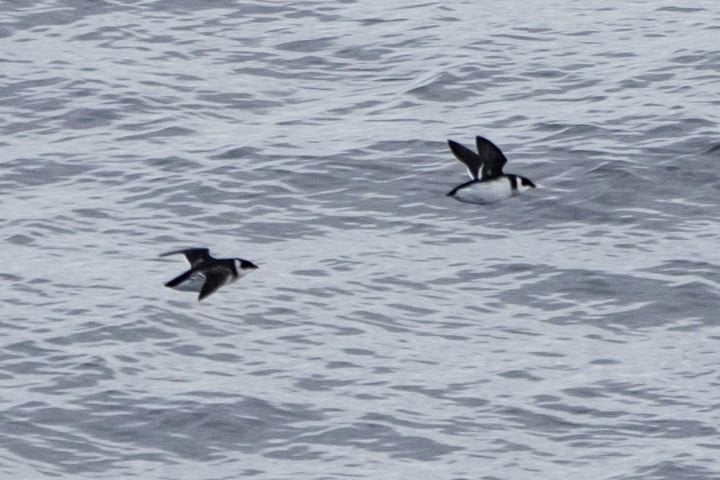During the not-so-dark night, The National Geographic Explorer sailed northward along the eastern end of Bylot Island and across the entrance of Lancaster Sound to the south shore of Devon Island. Devon Island’s coast is deeply indented by a series of fjords and two of them became the focus of this day’s exploration.
We anchored during breakfast in a beautiful fjord named Dundas Harbor on a warm and sunny day. A variety of hikes were offered to suit various interests and ability levels. Some chose a brisk walk of considerable distance on the tundra, some preferred shorter walks, while others wanted a more moderate hike to see some well-preserved remains of the extinct Thule culture dwellings. Everyone got to see a gyrfalcon’s nest high up on a cliff ledge above our landing where a fledgling falcon could be seen exercising its wings. There was lots of other wildlife to see ashore as well. Skeins of eider ducks passed by, there were nesting red-throated loons, and families of snow geese wandered among large boulders near the protection of the water’s edge. A small group of guests who decided to enjoy exploration by Zodiac rather than venture ashore was treated to some wonderful views of walruses that had hauled themselves up onto ice floes offshore. To add to the morning’s excitement, our various activities were briefly halted when a polar bear was sighted farther along the coast, but it eventually turned and walked away. The warm weather we experienced upon landing slowly gave way to a colder air mass that brought a chill as we prepared to leave. We all returned to our ship for lunch and the National Geographic Explorer sailed westward to the next big fjord known as Croker Bay.
Croker Bay has been carved from Devon Island by two tidewater glaciers that flow into the fjord from the Devon Island ice cap. Soon after we entered the bay a few sharp-eyed observers caught glimpses of a small group of elusive narwhales far ahead but we were unable to find them again once they had sounded. We did however find several small groups of walruses farther in the Bay. We thought it would be fun to cruise among the glacial ice floes by Zodiac but just as we began to put the boats in the water a blast of wind came pouring down from the ice cap, piping up to forty knots. That idea was quickly abandoned and the ship was turned back toward Lancaster Sound and westward in the direction of Beechey Island, tomorrow’s destination.

